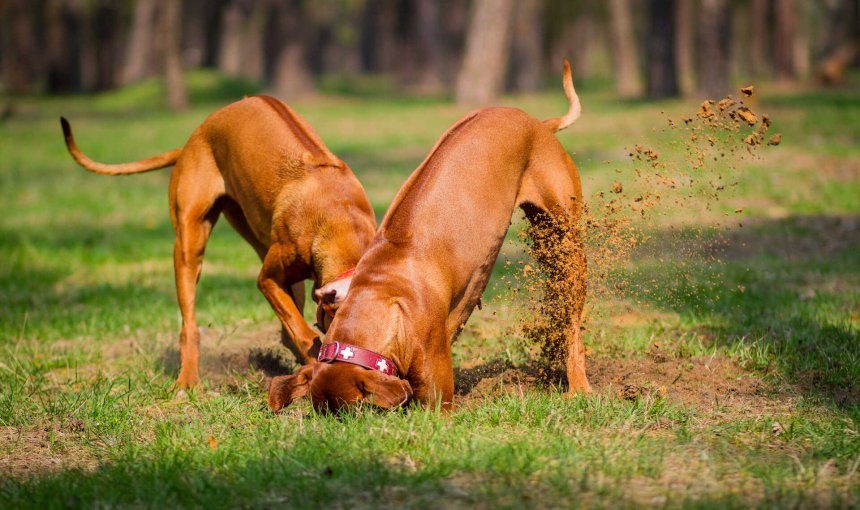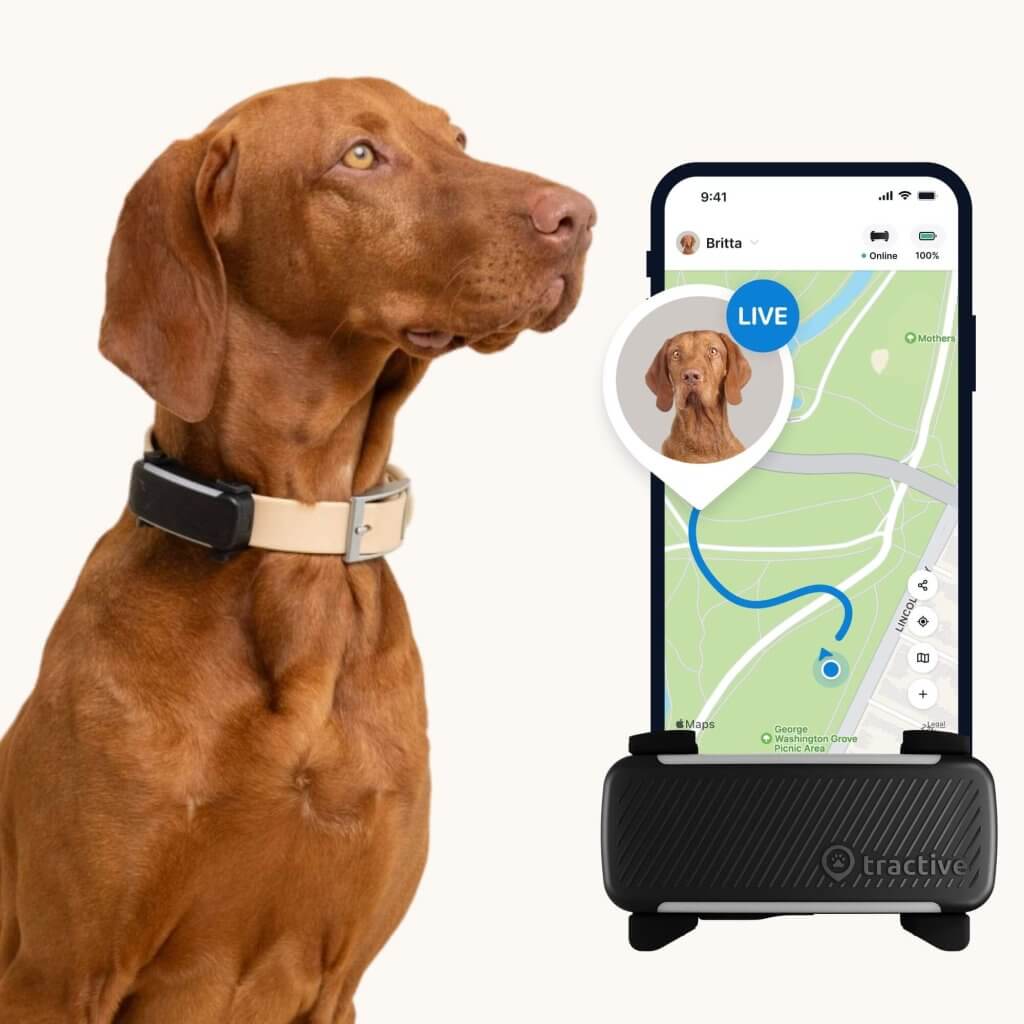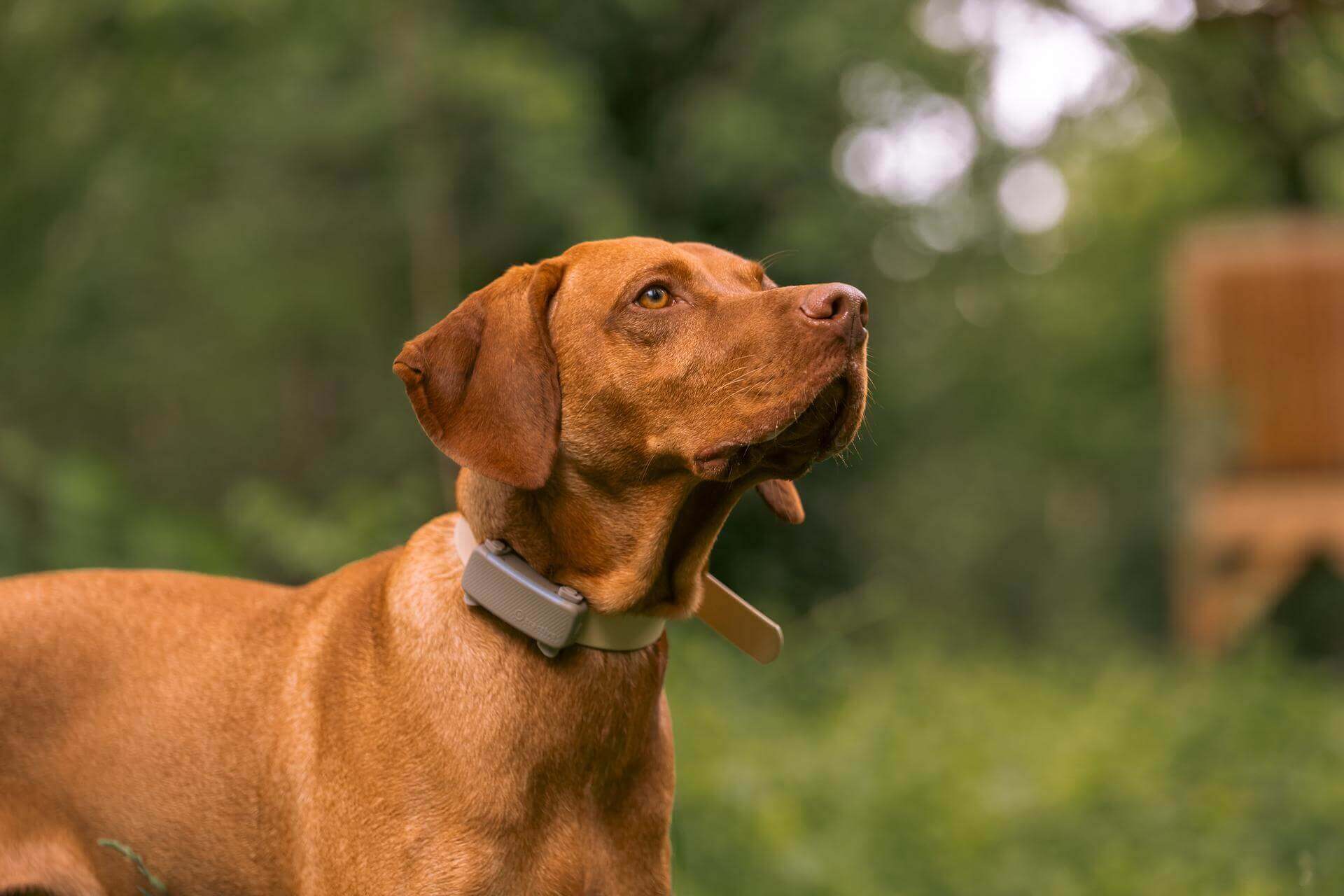Why Do Dogs Dig Holes? And How To Stop A Dog Digging?
Boredom, stress, prey drive - or some combo thereof - can all drive your dog to dig a hole a mile wide in your yard. Here's how to stop them & build a dig-proof, dog-proof lawn this summer!

At some point, your buddy might just have upturned your entire backyard just to unearth some toy, bone, or passing rodent from the ground. But why do dogs dig holes? And how can you stop your dog from digging up your backyard and turning it into a mess? Here are a couple of reasons why – and what to do if you suspect they might be doing so to make an escape attempt.
Key Takeaways
Common reasons a dog might dig include being bored, feeling anxious, or even instinctive behaviors, like prey drive.
You can stop a dog from digging by giving them a designated digging spot (whether indoors or outdoors), dig-proofing your fencing, or setting up barriers around your backyard.
A smart dog tracker with Health Monitoring (like Tractive) can help you locate your dog if they’re digging to escape, alert you if they dig past a “safe zone” like your backyard, and even monitor for signs of heat stress (like an elevated heart rate or excessive panting.)

Always know your buddy is healthy & safe
Read moreWhy do dogs dig holes?
A digging dog is a happy dog. It’s as natural and instinctive to them as is wagging their tails or snarfing down any bits of food you drop from the kitchen counter. Your dog could be digging for fun, because it gets them a good workout, or just because they’re mimicking you in the garden. Else, it could be due to:
- Boredom
Puppies often dig as an outlet for all that extra energy. Likewise, working dog breds need a “job” to stay engaged. Else, if your dog has learned that digging = attention from you (even if it’s scolding them), they might continue doing it. - Anxiety or stress
Including separation anxiety, noise anxiety, or even a big change in routine. (Like shifting houses.) So your dog might dig as a way to self-soothe. - The heat
Digging helps your dog create a comfy, cool resting spot – especially in hot weather. The ground beneath the surface tends to be cool and offers them some respite. - Prey drive
Dogs with sharp hunting instincts might sniff out woodland animals like moles, rodents, or even insects burrowing underground.
💡A smart dog tracker like Tractive can help alert you if your dog has escaped your backyard through a hole they’ve dug – so you can intercept them that much quicker.

Follow your dog anywhere
Get real-time location information, wherever they go. And find out when they try to make an escape, or just when they go somewhere they shouldn’t, with Virtual Fences.
How to stop a dog from digging (and save your lawn in the process!)
Give your dog a designated digging zone
Install a sandbox or set aside a specific spot in your yard where your buddy gets to dig freely. Use wooden slats, stones, or bricks to mark out your dog’s special digging zone. Sand and loose dirt are good options to fill it out. Even a kiddie pool filled with sand can work, especially if you’ve got a small- to medium-sized dog at home.
Next, bury some toys or treats in this special digging zone to keep your dog happy and busy. Else, you could also try designated “digging times” during the day. Take your dog out for a walk to a nearby beach, dog park, or woodland area near you. (Where they can dig to their heart’s content without any angry neighbors.)
Set up some “indoor” digging spots
- Try a plastic kiddie pool filled with toys to make them an indoor ball pit!
- A snuffle mat is another great indoor digging option, since its design encourages your buddy to sniff around and forage. You can even DIY one if you’ve got some craft material at home.
- A soft sided playpen is another option for smaller dogs. Fill it up with toys and try a fun indoor scavenger hunt!
- Interactive sniffing mats like the iDig Go and iDig Stay are great portable options if you’re traveling with your dog and want to keep them occupied on the go.
Teach your dog their boundaries – safely
You’ll have to monitor your dog a bit at first to make sure they stay within “their” digging zone. If they’re venturing into other areas in your lawn or backyard, be firm when you say “No,” but try not to sound impatient or mad. You might be tempted to pick up your dog to bring them back, but your dog is more likely to welcome you doing just that. So they might venture outside of their digging zone just to get your attention.
Rather, try and distract your dog away from the rest of your backyard by holding out one of their toys or calling out their name. (Or dropping some treats in their digging zone.) Give your dog a treat when they do stay within “their” digging zone. Positive reinforcement goes a long way compared to scolding or punishing! Make sure to pat and praise them plenty when they do come back to it, so they learn that staying there = good.
Revisiting basic obedience training commands like “Stay” can help your buddy learn their boundaries for where they’re allowed to dig and play – and where they aren’t. With time, patience, and tons of practice, your dog will learn that digging in some areas = bad, but digging in their spot = okay.
Dig-proof your fencing
Reinforcing your fencing can help prevent a determined dog from digging under it. For example, you could:
- Ensure your fence extends underground by 1-2 feet.
- Install a deterrent like chicken wire, hardware cloth, or even cement footing underground. This will help prevent your buddy from burrowing a tunnel under to escape.
- Natural barriers, like dense shrubs, large rocks, bricks, or gravel, along the perimeter of your yard can make it harder for your dog to dig near the edges of your fencing.
Read more: 15 Dog Fence Ideas For Your Escape Artist Buddy
Use barriers around the rest of your backyard
Your dog might have a special bush or hedge outdoors where they like to hide their favorite items. Which you do want to avoid them digging under, given the mess it can cause both indoors (from the paw prints) and outdoors. Even more so if you’ve got flowerbeds or vegetable gardens you’d rather they leave alone. So you could set up barriers like:
- Chicken wire just below the surface of the soil. (Just make sure the sharp edges face away from them to prevent any cuts or scrapes.)
- Large rocks, which can act as a deterrent even for bigger, stronger dogs.
- Motion-activated sprinklers to distract your dog from your plants or flowers. (Plus, it’ll be a relief on a hot day!)
- Baby gates, if you’ve got an indoor digger. (And are on the smaller side.)
Don’t skip out on getting active together
A well-exercised dog is one that’s less likely to get up to mischief. Make regular walks a priority, at least a few times a day. Do your best to prio at least 30 minutes of intentional exercise with your dog per day. (Or a few short, 10-minute sessions.) That’s the minimum required for most adult dogs to stay happy and healthy
You could also set up a backyard agility course with some pillows, cushions, chairs, and even broomsticks for the jumps. Or if the weather’s rubbish outdoors, try some fun indoor games for dogs to keep them happy and busy.
Regular training sessions also go a long way, especially for basic obedience commands, like “Sit,” “Stay,” and “Come back.” A well-trained dog is also one that’s less likely to run away. Or return to you right away once you call out for them. Give clicker training a whirl, if you want to switch things up!
With this routine of regular walks, training, playtime, and quality time together, your dog is less likely to get bored – and can learn to cope with any stress or anxiety that much better, because of the predictable routine.
Where a smart dog tracker can help
If you’re wondering how a smart dog tracker fits into this whole “stop the digging” mission, you’re onto something. Strapped to your dog’s collar, here’s how your trusty Tractive device can help, especially if you’re dealing with a digging dog.

Now with just a glance at your phone, you can:
- Track your dog in real-time.
If you’ve got an escape artist dog digging their way to freedom, you’ll never have to fear losing them again. Just hit ‘LIVE’ via your Tractive mobile app to see their real-time location on your device, down to the slightest movement. Plus, unlike an Apple AirTag, Tractive devices don’t need any network of compatible devices to work. Nor are they limited by any range. - Pick up on an escape attempt that much quicker.
From your app, you can set up a “safe zone” around your home or backyard. Now if your dog digs a tunnel and slips out, you’ll get an instant escape alert on your phone. So you can react quickly and bring them back before they get into any trouble. - Pick up on the signs of heat stress quicker.
Sometimes dogs dig to cool down. Your tracker comes with Health Monitoring features to pick up on signs like a fast heart rate or excessive panting, which could be signs of heat stress. This gives you a heads-up to check on them and make sure they’re not overheating. - Act fast if your dog is experiencing separation anxiety.
If your dog’s digging because they’re anxious when you’re not around, your tracker can help with that too. Switch on the Separation Anxiety monitor before you leave home – and it’ll alert you to behaviors like constant barking or restless pacing.



